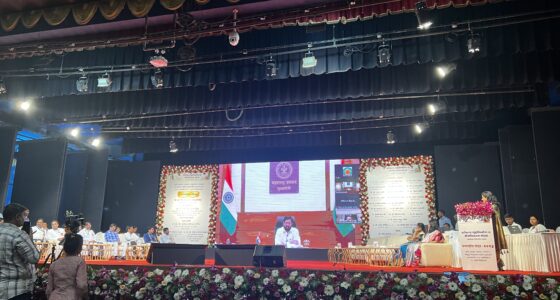· Share of alternatives in total investments rose from 3% in 2019, to 18% in 2022
· Foreign investments accounted for 78% of the total investments in the sector
· Data centers received USD1Bn of inflows since 2019, 51% of total investments in alternatives
Alternative assets in India received cumulative investments of about USD2.0Bn during the last 4-5 years (2019-H1 2023), led by foreign investors. Foreign investments accounted for 78% of the total investments in the segment, as investors continued to seek newer markets and newer avenues segments to diversify their asset portfolio while enhancing risk adjusted returns.
Institutional investors who were primarily focused on core asset classes have been building up their non-core assets around Data centres, Life sciences, Co-living, amongst others. Investments in alternatives have witnessed continued growth since 2019, driven by emergence of shared economy, increased digitalisation, and supportive government policy initiatives. During 2022, investment inflows in alternatives touched USD0.9Bn, a whopping 4.4X rise from 2019. Foreign investments in the sector have been the driving force and have witnessed a 6X rise in 2022 compared to 2019. Foreign investors continue to bet on the Indian real estate market, as India continues to be the fastest growing economies across APAC, Europe and Americas, with GDP pegged at 6.6% in 2023 by IMF. At a time when India’s economic outlook remains sturdy amidst global challenges, the business case for alternative investments will only strengthen.
Investments inflows in alternative assets (USD mn)
| Year | Investment inflows (USD million) |
| 2019 | 195.7 |
| 2020 | 359.0 |
| 2021 | 452.5 |
| 2022 | 866.7 |
| H1 2023 | 158.2 |
Source: Colliers
“As conventional asset classes like Office, Residential, Hospitality and Retail are evolved with significant investor and operator penetration, the alternatives are now poised for exponential growth over next few years. Alternate asset industry which revolves around enhanced customer experiences, flexibility in Office, Residential, Technology usage and data storages is likely to provide significant partnership opportunities to investors and operators. While core sectors continue to dominate the institutional inflows in Indian real estate sector, share of alternatives has risen significantly from 3% in 2019, to 18% during 2022.” said Piyush Gupta, Managing Director, Capital Markets & Investment Services
Data centers dominate alternative investment inflows
Since 2019, data centers have received USD1Bn of institutional inflows, with inflows rising multi-fold in the last 5 years. While other alternative asset classes such as Life sciences, Co-living etc. have also seen increased traction, data centers have remained popular amongst institutional investors due to their strong growth fundamentals & a promising outlook. During the period under review (2019- H1 2023), data centers accounted for about 51% share in the total investments in alternatives.
Strong growth in data consumption has catapulted the growth and development of data centers in India, in the last five years. Investors are enthused by burgeoning demand and attractive returns of the data centers and have been actively infusing funds over the last 2-3 years. Data centers in India have given promising returns at about 16-18%, much higher than 8-9% in core office assets, which have further accelerated investors’ interest in the space.
As data centers are capital intensive and entail greater technical know-how investors are increasingly partnering with data center operators, who are ramping up expansions in the country. Global hyperscalers too are viewing India as a prime market for expansion to capitalize on the increasing demand from cloud usage. 2023 has seen some landmark investments and pre-commitments from global hyperscalers in India’s data center space, as they are looking to set up their own facilities to suit their requirements. Data centers are also witnessing large platform deals between developers and investors who are looking to grow their businesses multi fold. During May 2023, Lumina CloudInfra, a data center platform owned and managed by Blackstone’s Real Estate and Tactical Opportunities funds, announced its plan to invest more than USD300 million to develop a hyperscale data center campus in Navi Mumbai. Similarly, Reliance Industries partnered with Brookfield Infrastructure and Digital Realty for developing data centers in select locations in India.
Global investors have specifically favoured data centers over the last 5 years, accounting for over 90% of the total investments in the sector during the period. Foreign investments have helped data center operators to achieve the desired scale, foray new markets and achieve development and operational expertise by providing access to capital. At the same time, according ‘infrastructure’ status to data centers has facilitated concessional credit availability for the development of large-scale data centres. Data protection Bill 2023 will further aid growth and investments in the sector.
Investments in Data centers (USD mn)
| Year | Investment inflows (USD million) |
| 2019 | 82.0 |
| 2020 | 235.0 |
| 2021 | 270.5 |
| 2022 | 448.7 |
| H12023 | – |
“Global investors are increasingly allocating funds towards alternative assets, with their share in total investments rising from 55% in 2019, to 75% in 2022. While data centers continue to dominate investments in alternatives, there is an increased opportunity in sectors such as Co-living, with more organized players looking to enter the space. Rising demand coupled with strong growth fundamentals for Co-living sector remain highly supportive of required investments over the long-term. As the market grows towards maturity, the sector will likely witness allocation of more foreign capital, enabling investors to enter new markets and benefit through economies of scale, fostering institutional investments in the sector,” said Vimal Nadar, Senior Director and Head of Research, Colliers India.”
Also Read: Building wealth, twice: How industrial galas fuel second investments









